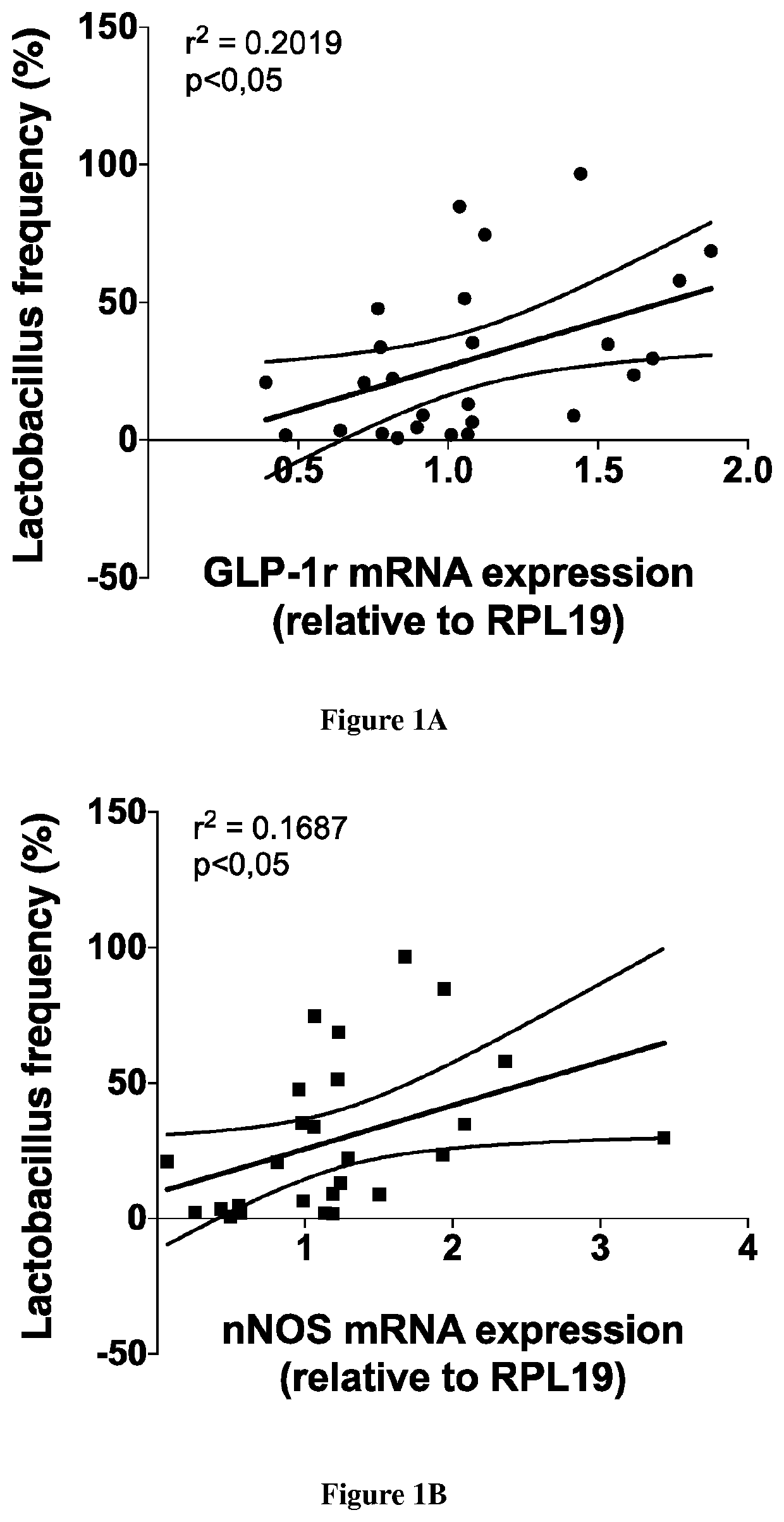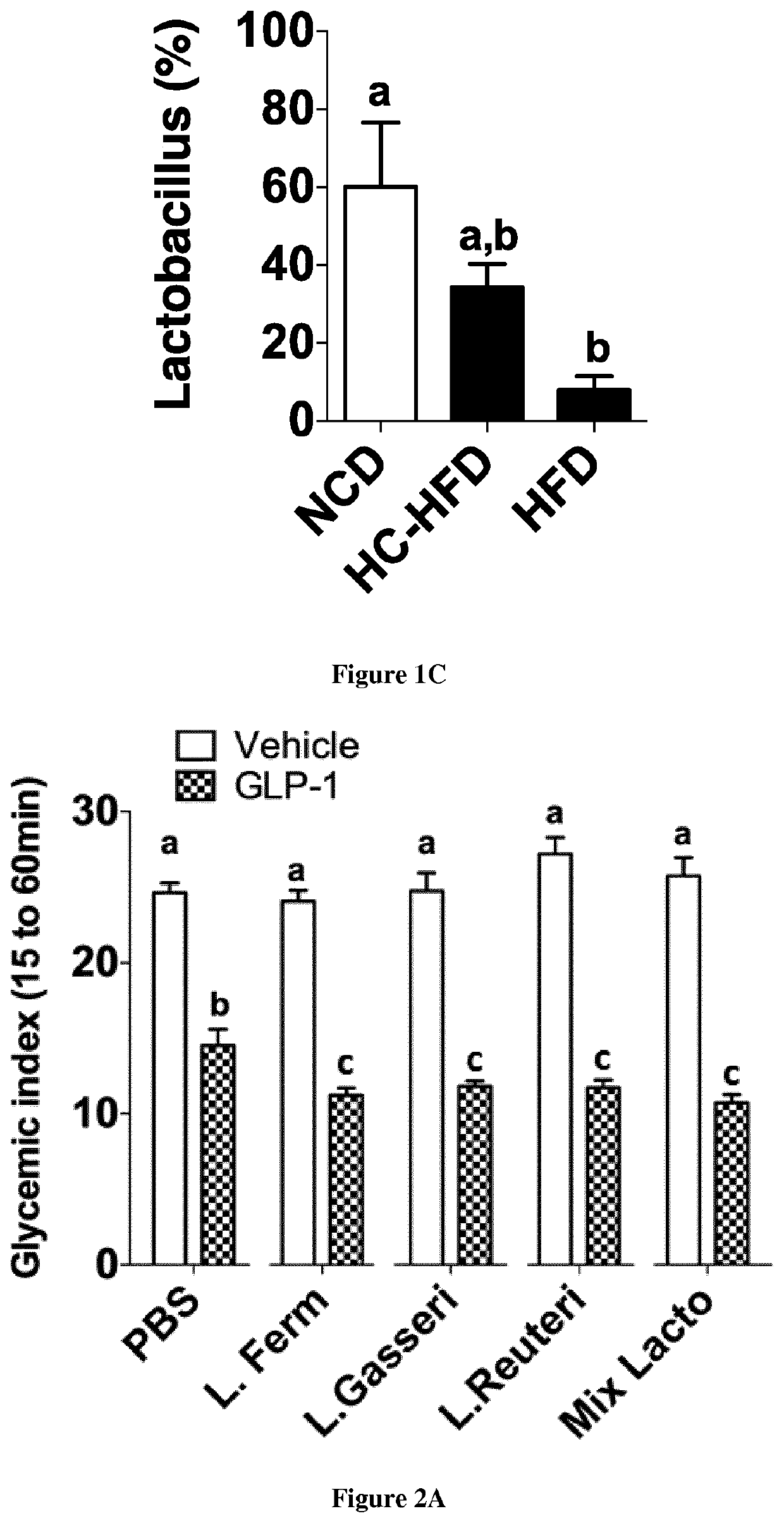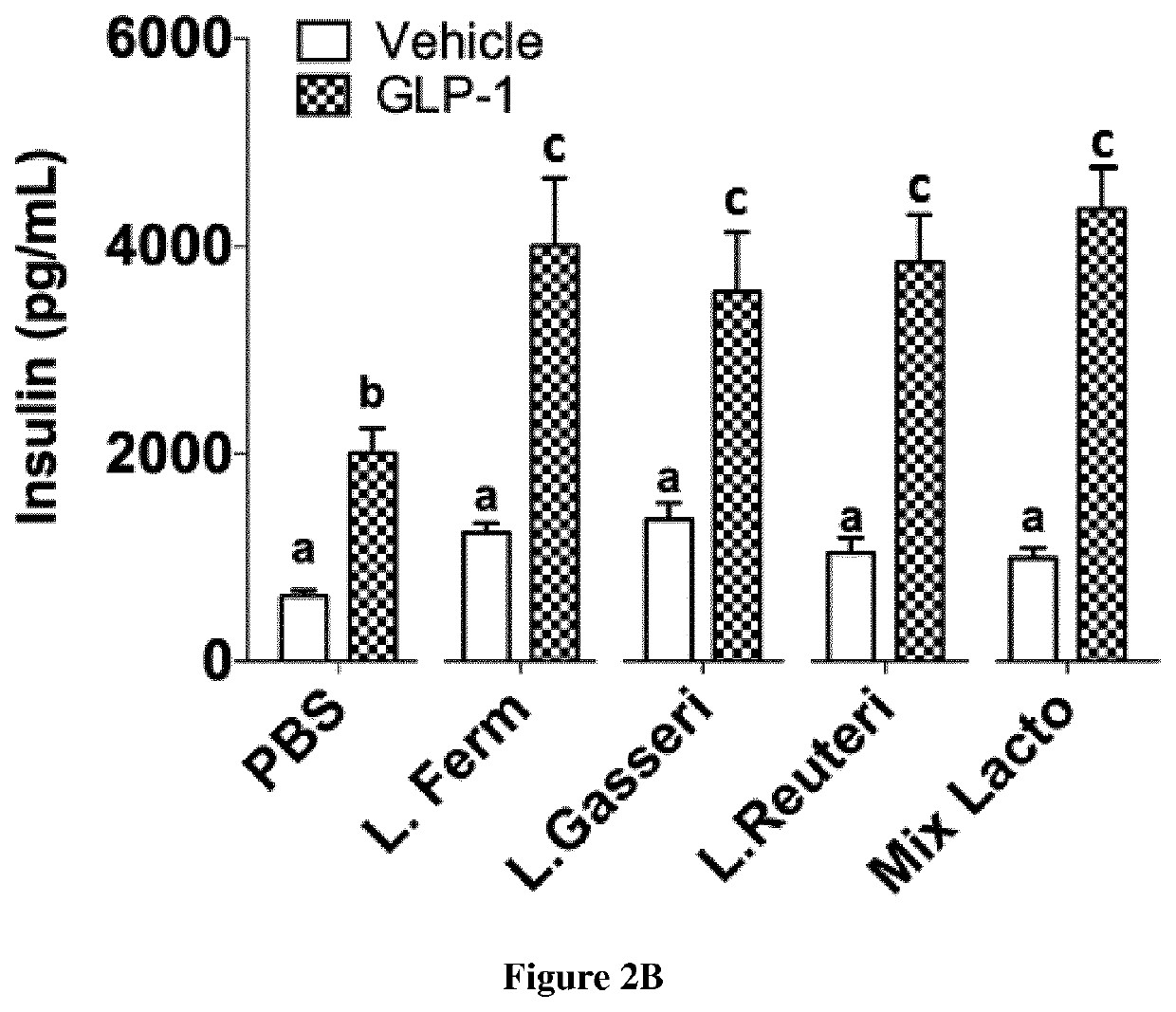Methods of enhancing the potency of incretin-based drugs in subjects in need thereof
a technology of incretin-based drugs and potency enhancement, which is applied in the field of enhancing the potency of incretin-based drugs in subjects, can solve the problems that the lipo-glucotoxicity characterizing some t2d patients could hamper the efficacy of glp-1r agonist to trigger the effect of lipo-glucotoxicity
- Summary
- Abstract
- Description
- Claims
- Application Information
AI Technical Summary
Benefits of technology
Problems solved by technology
Method used
Image
Examples
example 1
[0075]Methods:
[0076]Animals.
[0077]C57BL / 6 wild type (WT), TLR4, CD14 and NOD2 knockout (KO) male mice were initially purchased from the Charles Rivers laboratories. The GLP-1 receptor knockout (GLP-1rKO) male mice were a kind gift from DJ Drucker's laboratory (Toronto, Canada). Mice were housed in a controlled environment (inverted 12 h daylight cycle, light off at 10:00 a.m.) with free access to food and water. To generate metabolic abnormalities of type 2 diabetes, six-week old mice were fed for three months with a normal chow diet (NCD: proteins 22%, carbohydrates from cereal origins: starch and fiber; 67%, lipids 11% of total kcal, Safe), or a high-fat high-carbohydrate diet (HC-HFD: proteins 20%, carbohydrates as sucrose, maltodextrin, and fiber; 20%, lipids 60% of total kcal, Research Diet), or a high-fat carbohydrate-free diet (HFD: proteins 22%, carbohydrates <1%, 78% lipids of total kcal, Safe) . The impact of gut microbiota was analyzed following a 3 months diet treatment....
example 2
[0127]Experimental Procedure
[0128]Mice are fed during three months with HFD (high-fat high-carbohydrate diet). Lactobacilli are given daily by gavage (109 / mouse) during 1-1.5 months and after 2 months of diet. Quantification of the glycemic control i.e. intravenous glucose tolerance test and quantification of the glycemic profile and of the plasma insulin concentrations 15 minutes after the glycemic challenge.
[0129]Primary criteria: An improvement of the glucose control by the GLP-1 receptor agonist when the mice have been pretreated with the lactobacilli strategy.
[0130]Secondary criteria: a change in plasma insulin secretion.
[0131]Results
[0132]The data show that the chronic treatment of the type 2 diabetic mice with a lactobacilli (any one!) improves the quality of the glucose control by the GLP-1 receptor agonist (natural GLP-1 molecule) since in absence of GLP-1 the Lactobacilli treatment does not have an impact on itself. Therefore, it looks that the use of any Lactobacilli is r...
PUM
| Property | Measurement | Unit |
|---|---|---|
| circumference | aaaaa | aaaaa |
| circumference | aaaaa | aaaaa |
| circumference | aaaaa | aaaaa |
Abstract
Description
Claims
Application Information
 Login to View More
Login to View More - R&D
- Intellectual Property
- Life Sciences
- Materials
- Tech Scout
- Unparalleled Data Quality
- Higher Quality Content
- 60% Fewer Hallucinations
Browse by: Latest US Patents, China's latest patents, Technical Efficacy Thesaurus, Application Domain, Technology Topic, Popular Technical Reports.
© 2025 PatSnap. All rights reserved.Legal|Privacy policy|Modern Slavery Act Transparency Statement|Sitemap|About US| Contact US: help@patsnap.com



